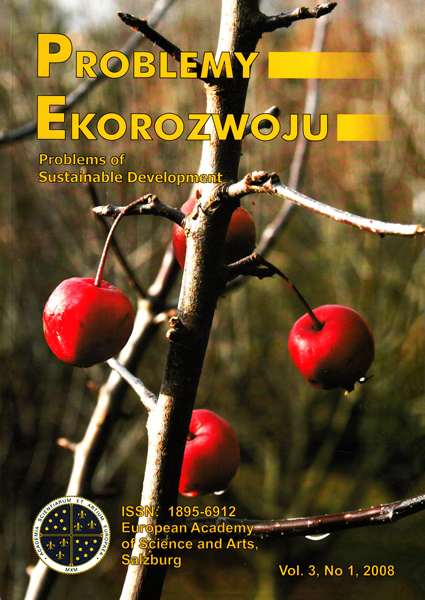Sustainable Development in Contemporary Civilisation. Part 1: The Environment and Sustainable Development
Main Article Content
Authors
Abstract
The rapidly increasing consumption of the Earth’s resources carries with it the threat of these being exhausted over the shorter or longer terms. What this means is that, if no major breakthrough in science takes place, a threat will also be posed to sustainable development itself, inasmuch as that this entails such a means of proceeding with development as ”meets the needs of the present without compromising the ability of the future to meet its own needs”. The tendency for resources to run out goes hand in hand with the pollution of the world’s geoecosystems through the release into them of chemical compounds – as the said resources are being extracted, processed or utilised by human civilisation. Nature has come up with mechanisms by which the majority of chemical compounds present in it can be neutralised, but human activity has gone far beyond natural systems’ capacity for self-purification, in terms of the sheer amounts of chemical compounds emitted. Equally, the development of techniques and technologies – in environmental engineering in particular – is capable of eliminating most threats associated with the pollutants already released into the environment, the trick being to derive intensified versions of the various means of natural selfpurification inherent in the processes by which carbon, nitrogen and oxygen in particular are cycled within geoecosystems. It has further proved possible to introduce new processes unknown in nature whereby the negative impacts of pollution on geoecosystems can be neutralised. In consequence, it is reasonable to suggest that we possess the technology to allow geoecosystems to be maintained in a state that does indeed allow future generations undiminished possibilities for making use of them. The problem here is that, thanks to the high costs involved – and (in part in consequence of that) a perceptible lack of will to act, there is ongoing degradation of geoecosystems – so ongoing in fact that an ”irreversible” state of degradation may be being approached in certain areas. Thus, while humankind may be in possession of the appropriate technical and technological power allowing for environmental sustainability to be achieved, this aim is not being pursued in many areas on account of an absence of the will to target the necessary material resources at the problem. A question that therefore remains open concerns the ways in which we might shape attitudes (also as necessary using the force of law to order the carrying out of certain tasks) in such a way that sustainability as regards the natural environment is achieved.



